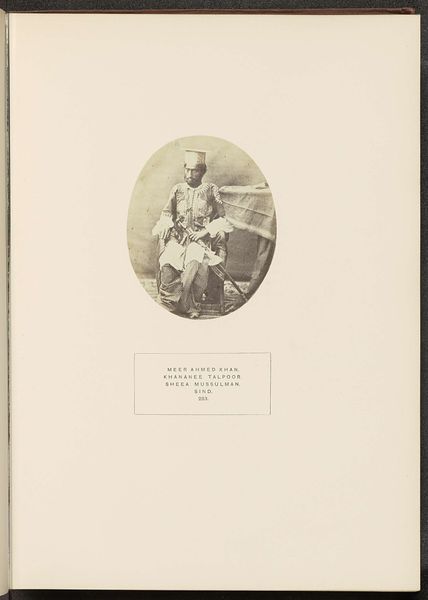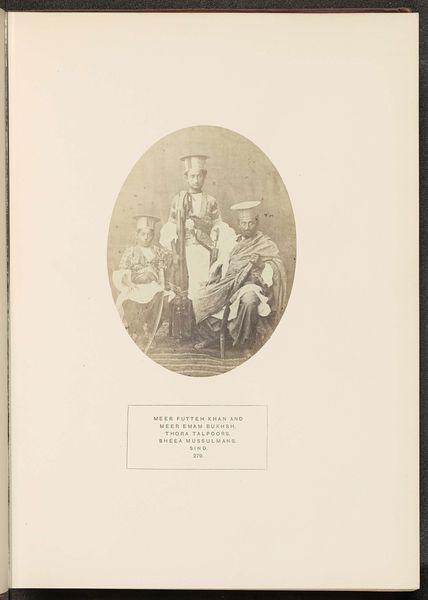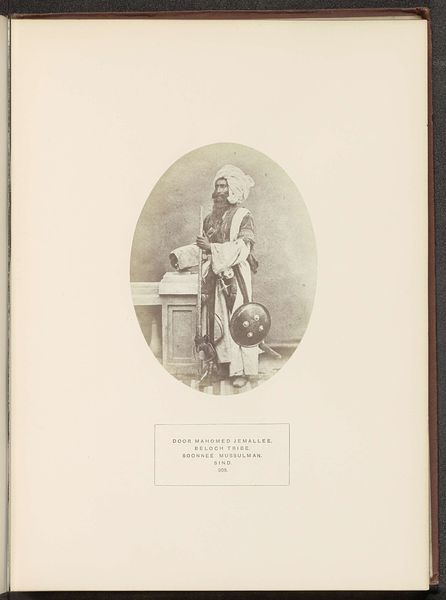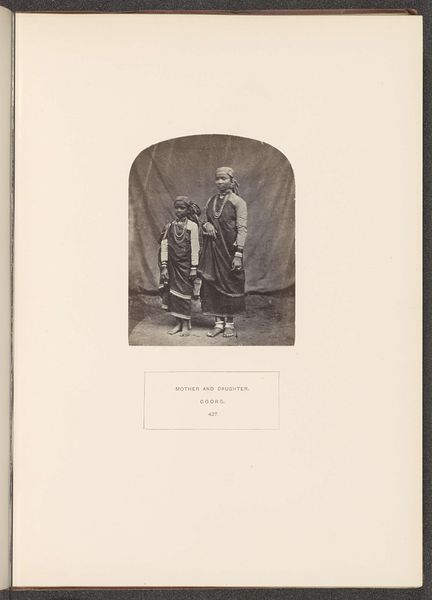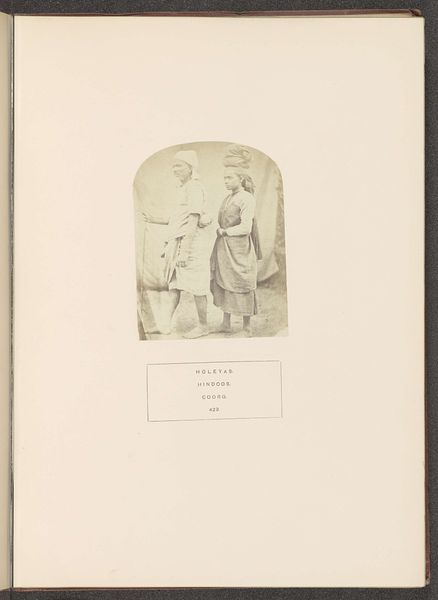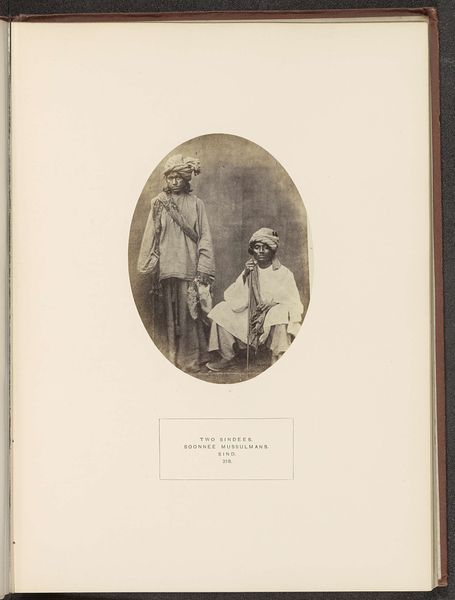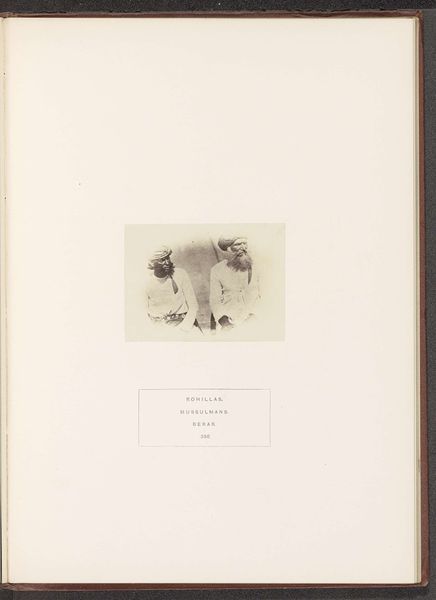
Portret van Mirza Ali Mahomed, een edelman of prins uit Sindh before 1872
0:00
0:00
photography
#
portrait
#
photography
#
ancient-mediterranean
#
orientalism
Dimensions: height 119 mm, width 94 mm
Copyright: Rijks Museum: Open Domain
Editor: This photograph, taken before 1872 by Henry Charles Baskerville Tanner, is titled "Portret van Mirza Ali Mahomed, een edelman of prins uit Sindh." It’s quite striking! The subject's clothing appears very elaborate, almost theatrical. How should we approach understanding this work? Curator: Well, let's start by considering the context of photography itself as a technology. What power dynamics were at play in creating this image? The choice of materials, the photographic process itself—it all speaks to a particular kind of documentation and representation that was becoming prevalent in the colonial era. What do you notice about the background and setting? Editor: It looks quite bare, almost staged, which further reinforces the sense of a constructed image rather than a candid shot. So, you are suggesting that the very act of taking the picture becomes a display of power, by showcasing someone from Sindh. Curator: Precisely. And think about the dissemination of such images. Who was consuming them and what ideas were they reinforcing about different cultures? We also need to examine the materiality of his clothing – where did the fabrics come from, what kind of labor went into creating them? What narratives do these material aspects tell? Editor: That’s fascinating! I never thought about photography in this way before. Looking closely, I notice the light reflecting on the sword near his side; its craftsmanship must have been exquisite, as would be the means to own it. How did the photograph's materiality influence how Europeans would see Mirza Ali Mahomed? Curator: Indeed. The photographic process flattens everything, reducing a three-dimensional person and their belongings into a consumable image. It becomes less about the individual and more about a symbol of wealth or otherness. Are we seeing a respectful representation, or an objectification driven by the demands and assumptions of its European consumers? Editor: I hadn't fully considered how deeply embedded social and economic power could be in a simple portrait! Thinking about the process, labor, and the intended audience, it’s not just a photograph, but a carefully constructed artifact. Curator: Exactly! Now you're starting to see the material dimensions at play.
Comments
No comments
Be the first to comment and join the conversation on the ultimate creative platform.
